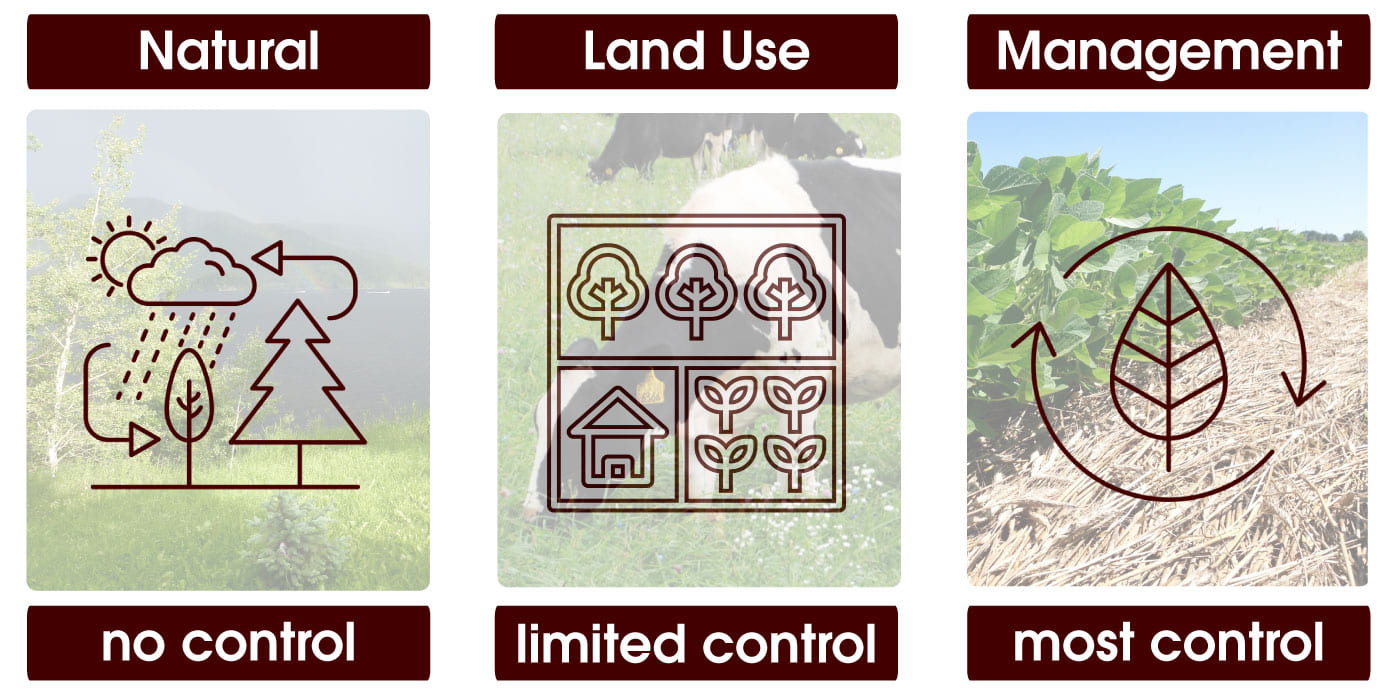
Elements of a production environment that impact soil health can generally be grouped into three major factors based on natural and human factors: natural (inherent) properties, land use systems, and management practices.
The New York Soil Health Program has released its newest policy brief, providing critical insights into soil health and agricultural practices.
Understanding Soil Health
We all know that healthy soils are the cornerstone of sustainable agriculture and a key player in environmental protection. But what exactly drives soil health, and how can we enhance it? These are the questions at the heart of the New York Soil Health Program’s latest policy brief, “Drivers of Soil Health and Strategies for Enhancement.”
Three Key Factors
The policy brief states that three major factors influence soil health:
- Inherent Properties: These are the natural characteristics of soil, including its parent material, climate, landscape features, and biological processes. Each factor plays a role in shaping a soil’s unique qualities.
- Land Use and Cropping Systems: The specific crops grown on a piece of land and the land use systems employed can significantly impact soil health. Perennial systems like pastures and orchards foster better soil health due to longer active growing periods and less soil disturbance.
- Management Practices: These practices include recycling organic waste, using cover crops, reducing tillage, combating soil compaction, and choosing nutrient sources wisely. Implementing these practices can enhance both soil health and productivity.
Biomass Balance Matters
A key insight from the policy brief is the importance of biomass cycling for soil health. Soils naturally lose carbon and nutrients through biological processes, so a cropping system that produces and cycles more biomass can replenish these essential components in the soil.
For example, a significant portion (40-50%) of the crop biomass is harvested and sold in annual grain production. Still, the remaining biomass is typically returned to the soil as residue, although the amount varies. In contrast, processing vegetable cropping systems tend to have poorer soil health because they largely remove harvested plants from the field. Similarly, a nearly complete harvest of corn silage negatively impacts soil health, but growers can reduce these effects by practicing crop rotation with perennial forages or applying manure.
Policy Considerations
The policy brief provides practical considerations for enhancing soil health:
- Evaluate soil health and regenerative practices through the lens of biomass production and cycling. Soil health enhancement should focus on increasing biomass and organic matter inputs and maximizing active plant growth periods.
- Interpret soil health and soil health benchmarks in the context of inherent soil characteristics and cropping systems. Soil health benchmarks and standards need to account for natural soil differences as well as intrinsic differences among land uses and cropping systems1.
- Promote cropping systems that optimize carbon and nutrient cycling. Soil health enhancement should include crop management strategies that support biomass inputs from multiple sources, including crop residues, organic wastes, and cover crops, and minimize carbon and nutrient losses from soil erosion and nutrient leaching.
- Promote carbon and nutrient reallocation at the field and regional scale. The circular bionutrient economy concept should be applied to maximize organic waste capture and processing and target regional allocation to lands in need of soil health regeneration.
- Promote management practices that enhance crop growth and maximize the return of biomass to the soil. Recognize the role both organic and inorganic nutrients play in supporting soil health, and promote practices that address yield-limiting concerns.
For those interested in further exploration, this policy brief and previous policy briefs can be viewed here.